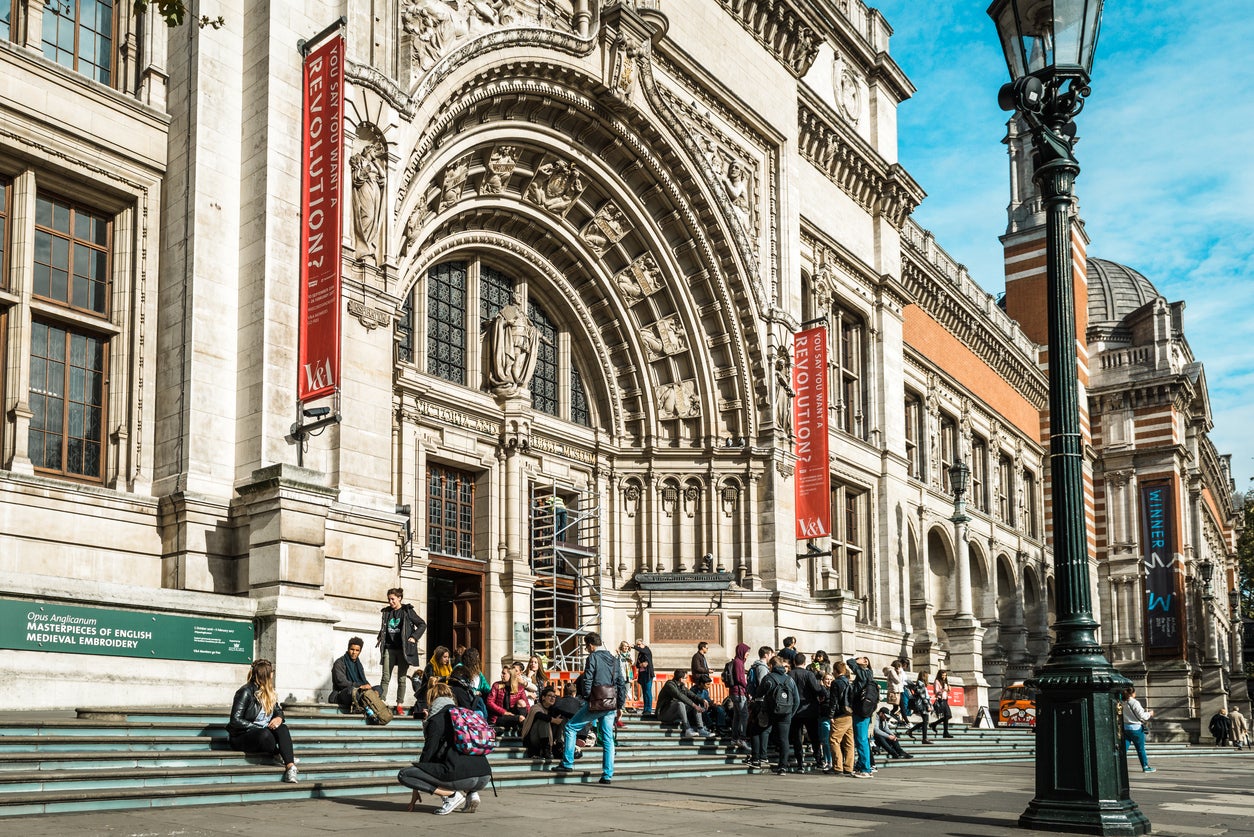Department stores like House of Fraser and museums like the V&A face similar problems – how about a bold solution?
Both institutions need to increase footfall, so why not go into partnership?


Will the traditional department store soon be an anachronism, like trams or gas lighting?
House of Fraser has been struggling for some time, and has just been sold to Mike Ashley, the flamboyant owner of Sports Direct. He is bound to close stores, lay off staff and rebrand shops with his own merchandise. In other words, the era of “Are you being served?” is dead and buried. It will be replaced by the bargain bin, the over-crammed rail of sportswear, and the barely interested staff.
Recently, I asked a man working in the luggage department of John Lewis in Westfield exactly what the dimensions of a medium suitcase were – back came the answer: “I don’t know”! In the Vodafone shop in the same mall, a sales assistant went from offering to change my phone for £400 to £40, and when I started getting overwrought, called me a racist!
Service is certainly not what it used to be – no doubt about that. Currently, Marks and Spencer, Mothercare and Poundland are all struggling, while John Lewis has started offering new services in order to fight off its decline. From this September, 15 of their stores will be offering personal stylists, themed events, evening classes and concierge services – all stuff you can’t get online. If it works, it will be rolled out across the group.
The modern-day Selfridges has gone way beyond flogging merchandise, too: it offers events, pop-up restaurants, contemporary art and happenings in order to entice people through their doors – not so different to the early episodes of the popular Mr Selfridge TV series, when the store’s American founder would try anything to increase footfall and appeal to the new market, working women.
In the current retailing crisis, the booming businesses on the high street offer specialised stuff you can’t get online – which accounts for the rise in barbers’, beauty and tanning salons, nail bars, coffee shops, specialist cafes selling cakes, and gyms. The losers are banks, pubs (closing at the rate of one a day), travel agents (now 86 per cent of us book our holidays online), estate agents and post offices. The future high street will be all about experiences, meeting people and trying new things.
At the same time, as many department stores are starting to resemble mausoleums, with bustling activity at street level but go up a floor and you find empty spaces filled with beds or chairs that no one is sitting on.
Museums have a similar dilemma. Facing huge cuts in government funding, and occupying large, ageing premises, they’ve had to find other ways to supplement their income. At first, it was cafes and bookshops: fair enough. Then sponsored exhibitions, focusing on popular music and fashion, anything that would entice younger folk through the door (what I, admittedly a culture vulture, would call “culture with a small c”.) I value museums as the source of scholarship and uniqueness. I was honoured to spend over six years as a trustee of the Science Museum, and income was our number one priority.
I grew up adoring museums – they were the palaces where dreams were born, not in our cramped, half-a-terrace house. I joined the sketching club at the Natural History Museum as a schoolgirl, spending Saturday mornings hunched over a board trying to capture a decent likeness of a polar bear or a hawk. Sunday afternoons were spent in the Science Museum, trying to pick up boys in the coal mine.
Later, I wrote a book about the history of British ceramics, and spent hours in the upper floors of the V&A, studying their marvellous collection of Wedgewood, Worcester, Chelsea and Swansea Pottery, dodging the buckets that caught the drips from the leaking roof. Not another soul was ever around – few visitors ever ventured up to this level.
Now museums, in an effort to balance the books in an age of free admission, seem to have dumbed down to an astonishing level. This week, the V&A announced their shop would be selling a collection of expensive sexy women’s underwear – including a thong costing over £130, for God’s sake!
The shop is extremely well-run, selling everything from replicas and rugs to scarves and books, and the museum emails me advertising new merchandise almost as much as fashion websites like Farfetch or Net A Porter do. Perhaps the V&A and John Lewis should go into partnership. One of the upper floors of the latter’s Oxford Street store could be devoted to flogging replicas of artworks and stuff from the V&A shop (a spot of culture while you shop for towels) and the V&A could turn one of its rarely visited upper floors into a branch of John Lewis…matching the modern teapot with its 16th century ancestors. Every spout could tell a story.
Getting people to climb a stair is one of the challenges of modern museums and department stores – John Lewis spent millions installing escalators – so what you need to offer is an unforgettable, unrepeatable experience once you’ve bothered to make the trip.
Join our commenting forum
Join thought-provoking conversations, follow other Independent readers and see their replies
Comments